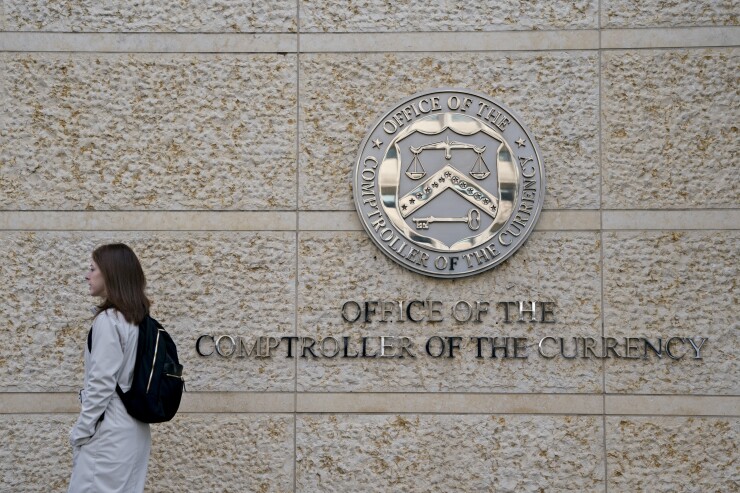WASHINGTON — Regulators require large banks to hold long-term debt that can be used to unwind a firm in a failure. But if other banks invest in a mega-institution’s “loss-absorbing” debt, the federal agencies say the latter firm’s failure could have an unintended domino effect.
Agency officials proposed a solution to this problem on Tuesday — under the plan, large banks would have to hold additional capital if they purchase such debt instruments for their balance sheet.

“The proposal would reduce both interconnectedness within the financial system and systemic risk,” according to the joint proposal released by the Office of the Comptroller of the Currency, Federal Reserve Board and Federal Deposit Insurance Corp.
Following the financial crisis, the U.S. and other countries created processes to resolve failed behemoths in a way that did not rattle financial markets. One reform was known as “total loss-absorbing capacity,” or TLAC, which requires the largest banks to hold a minimum amount of capital and long-term debt that could support a failure resolution.
Under one resolution approach, a firm’s TLAC debt, which is unsecured, can be converted into capital to support the failed company’s operations and potentially that of a successor firm. But if that unsecured debt is on the balance sheet of other banks subject to regulatory capital requirements, it could create unintended contagion risk.
The proposal Tuesday would subject that debt to exclusion from what a bank counts towards its regulatory capital goals, although there would be exceptions for debt used for market-making purposes.
The new restriction would apply to TLAC debt purchased by the large banks that follow the “advanced approaches” of international capital rules. Under the proposal, smaller community banks could purchase TLAC debt without an effect on their regulatory capital.
“The agencies expect that the proposal will have the benefit of improving the resiliency and enhancing resolvability of advanced approaches banking organizations in the event that an entity required to issue … [long-term debt] or TLAC fails or encounters material financial distress,” the regulators said in the proposal.
The new proposal, which follows international guidelines set by the Basel Committee and Financial Stability Board, parallels similar limits on banks holding instruments issued by other banks to satisfy regulatory capital rules.
The public will have 60 days from when the proposal is published in the Federal Register to comment.





